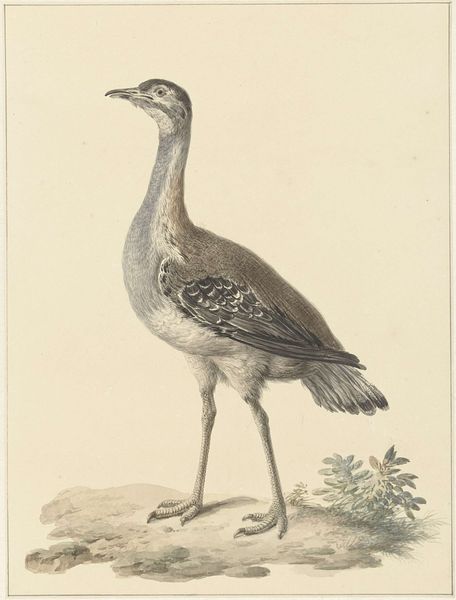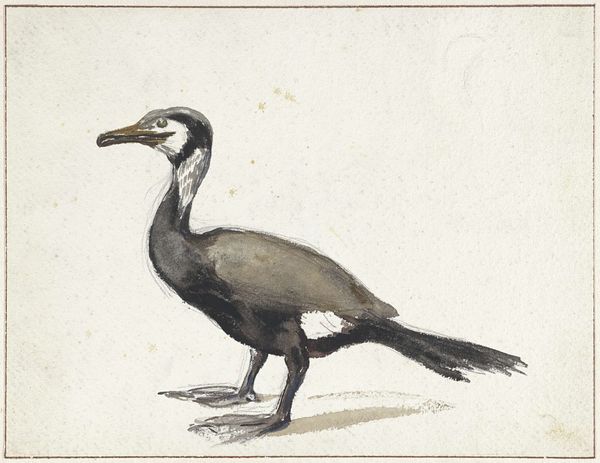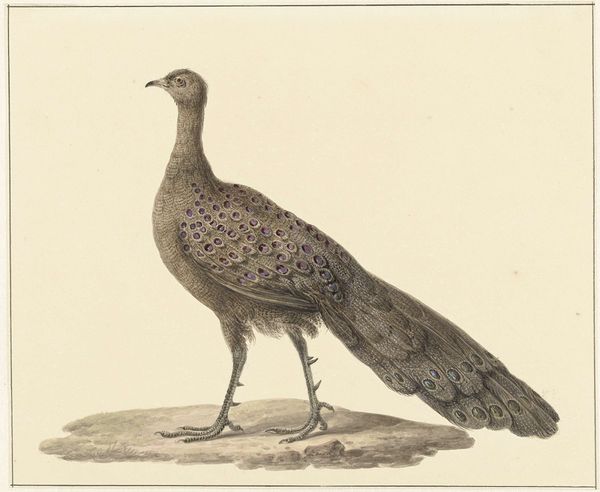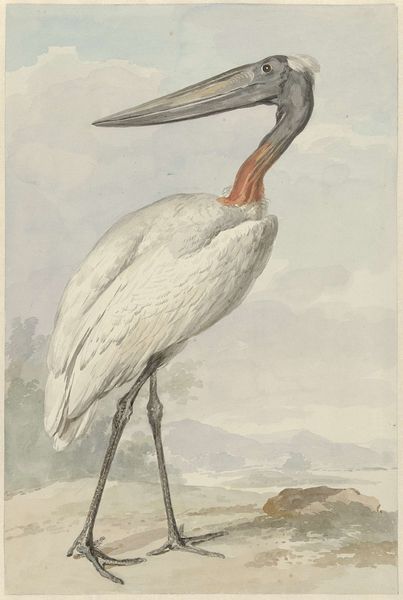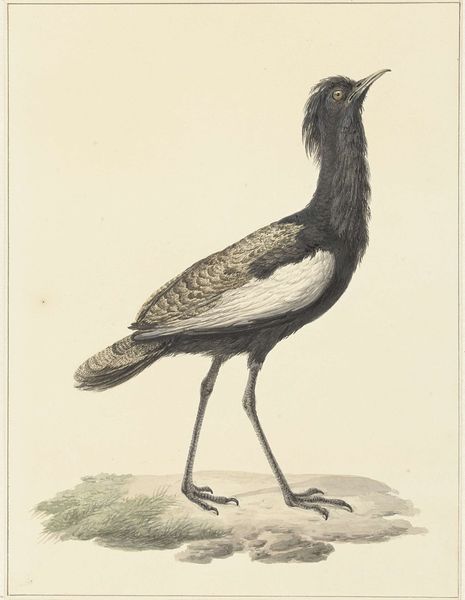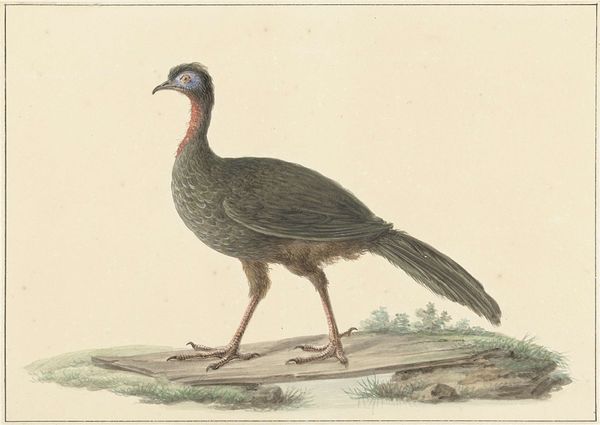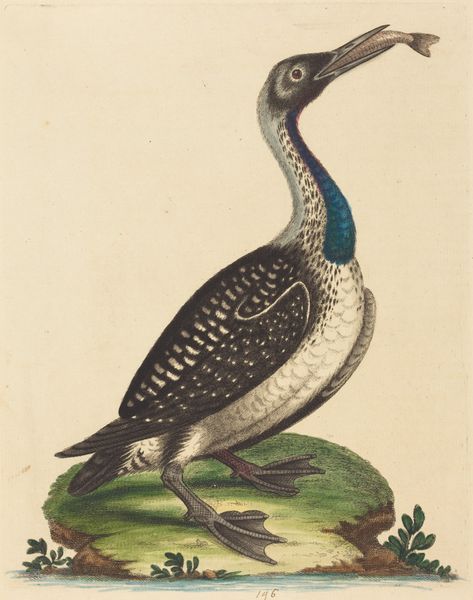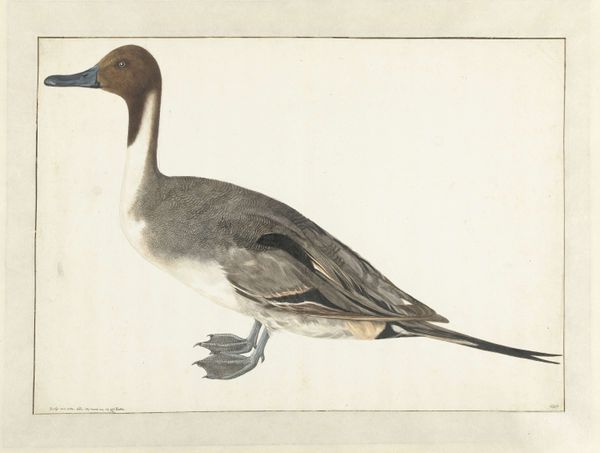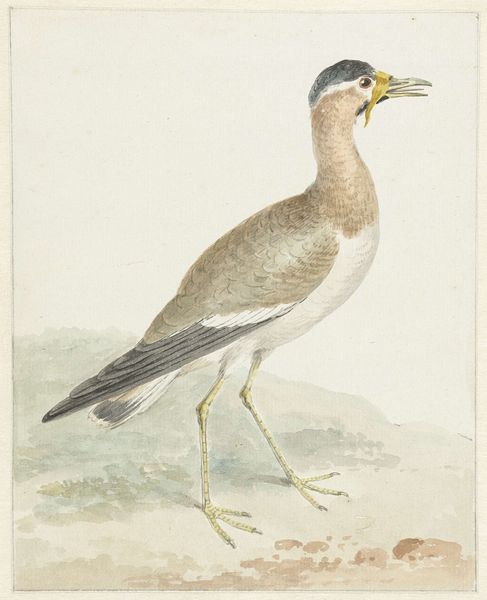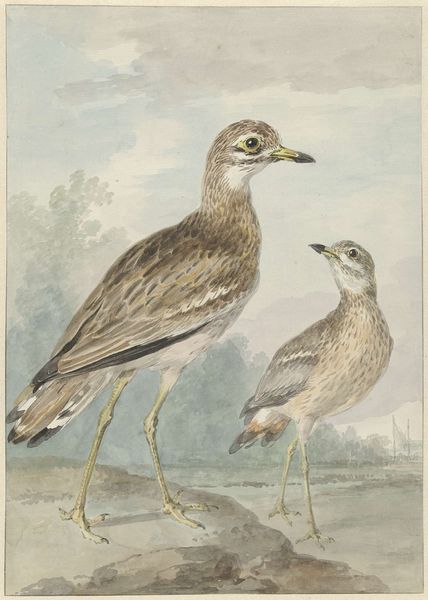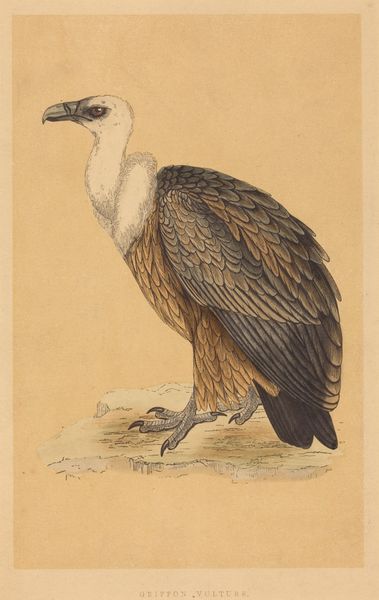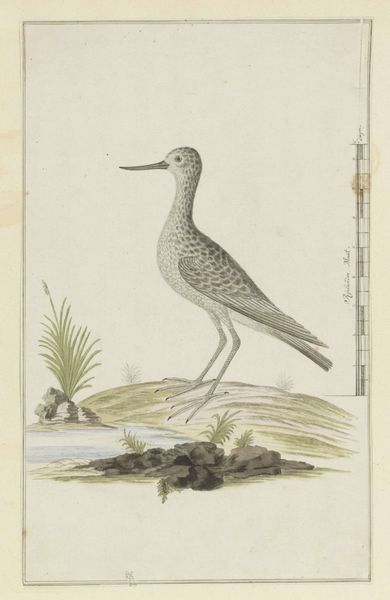
drawing, watercolor
#
drawing
#
landscape
#
watercolor
#
coloured pencil
#
watercolour illustration
#
watercolor
#
rococo
Dimensions: height 362 mm, width 255 mm
Copyright: Rijks Museum: Open Domain
Curator: Here we have Aert Schouman's "Aalscholver," created sometime between 1720 and 1792. This watercolor drawing resides here at the Rijksmuseum. Editor: It's so muted and gray—gives off a melancholy air, don’t you think? A bit desolate, despite the pastoral landscape behind the bird. Curator: The tonal range is subtle, but remarkably descriptive. Notice how Schouman meticulously renders the texture of the bird’s plumage with varying strokes of watercolor. And consider the rococo elements present in the landscape, juxtaposed to the focus on detail that we get from the naturalism apparent in this portrait of an animal. Editor: Right, but the 'Aalscholver,' or cormorant, takes on a powerful presence. Cormorants have historically been associated with greed and voracity, symbols linked to colonization. Are we perhaps meant to question the human impact on nature during that time? The looming grey hints at ecological destruction, and not pastoral Rococo harmony. Curator: The artist certainly focused on the form of this powerful animal. Look at how the lines create definition for its form in an artful composition using color to depict this large waterfowl. The use of shape to emphasize form is wonderfully vivid; yet, simultaneously, Schouman evokes movement with delicate grace within a relatively restricted palette of grey, brown and hints of blue. Editor: Precisely. Even the inclusion of the solitary windswept tree emphasizes themes of resilience amidst a transformed or threatened habitat, pointing perhaps to environmental consequences born out of the economic expansion characteristic of that period. Curator: Interesting angle, but, from a strictly compositional perspective, the sinuous curve of the cormorant’s neck echoes the bend in the distant shoreline, unifying the composition formally and reflecting similar elements of the Rococo period in art. Editor: Whether intentional or not, it presents a dialogue about the tensions between an emerging industrialized society and its effects on the natural world. It acts as a document, even perhaps as an implicit critique. Curator: I can respect that interpretation, although, to me, it is primarily an exquisite example of observation and artistic execution from an earlier time. Editor: Agreed—its quietness provokes a deeper contemplation. It definitely prompts necessary conversations in the present moment.
Comments
No comments
Be the first to comment and join the conversation on the ultimate creative platform.
